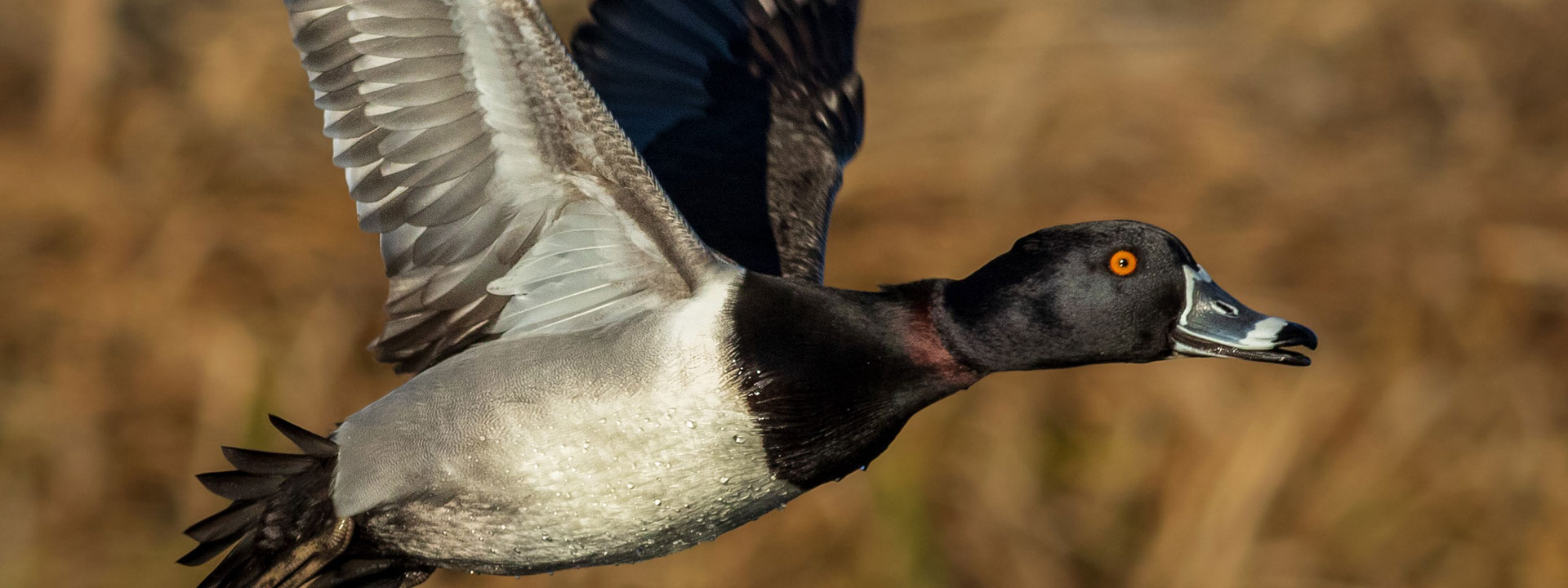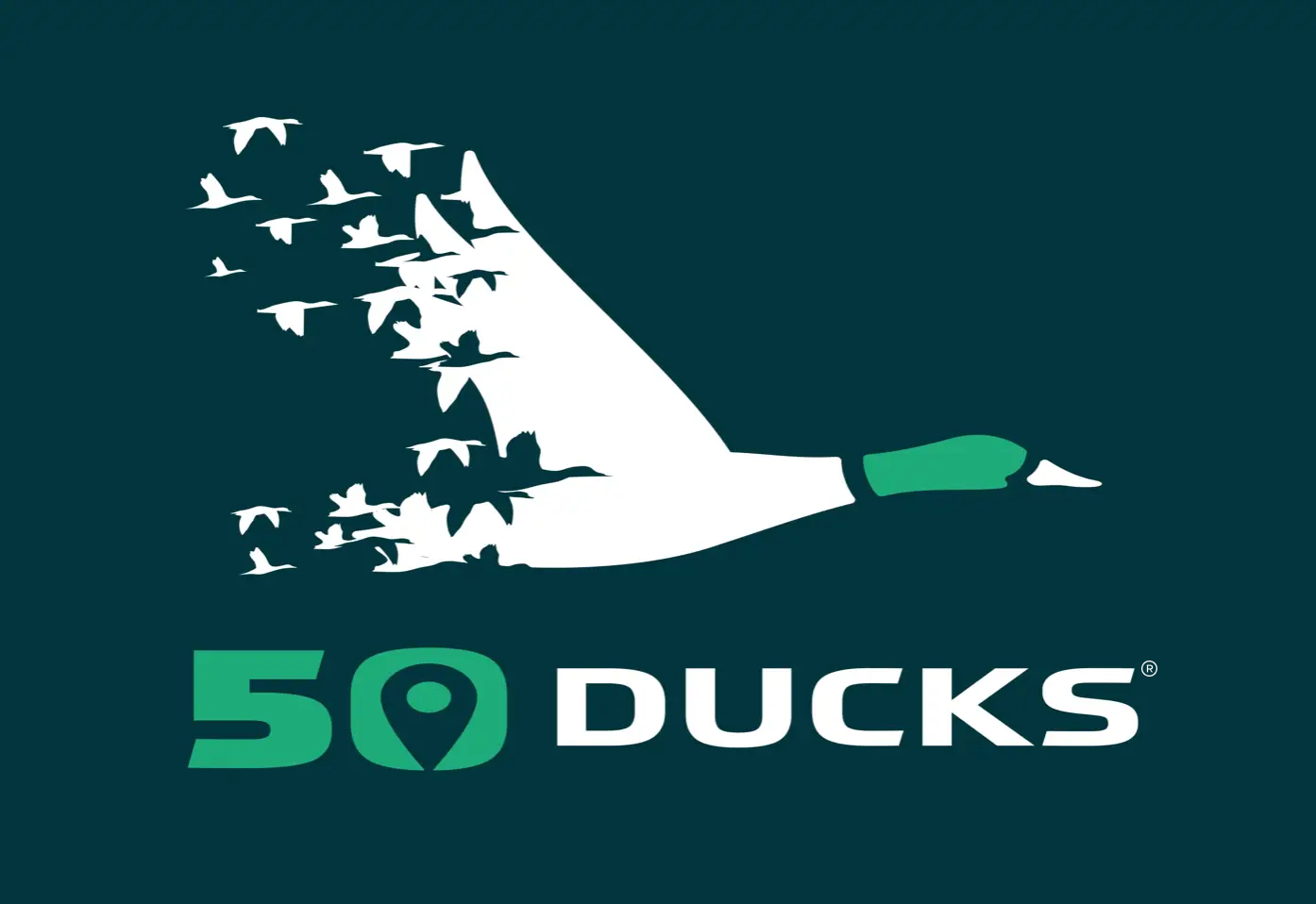Frequently Asked Questions

50 Ducks Live Streaming FAQs
50 Ducks Live Tracker lets you follow individual ducks' real-time movements. It provides detailed insights like flight speed, altitude, and direction. With filters to analyze weather impacts and historical data, our platform offers an interactive way to explore waterfowl behavior and migration.
Yes! Our platform is informative yet simplistic. Whether you’re a seasoned waterfowl enthusiast or new to tracking is irrelevant. The intuitive interface ensures an enjoyable experience regardless of technical expertise.
50 Ducks has redefined our connection with waterfowl. Central to our innovation is the live tracker, which extends a unique opportunity to enthusiasts, allowing them to monitor the real-time actions of specific ducks and geese. This distinctive feature sets our platform apart, giving members an immersive, one-of-a-kind experience with each bird.
Adaptable filters allow you to explore how weather impacts waterfowl behavior. By analyzing data like temperature and atmospheric pressure, users can uncover patterns in migration and habitat use. This is valuable when assessing how birds interact with their environment.
50 Ducks goes beyond tracking locations by detailing each bird’s full flight story, including speed, altitude, and patterns. This rich data gives users a deeper look into waterfowl behavior and their connection to the environment, transforming passive observation into an engaging, insightful experience.
The live tracker on 50 Ducks can be accessed on mobile devices, providing flexibility to view it from anywhere. However, the tracker has been optimized for desktop and laptop computers, ensuring users have the best possible experience when accessing it.
Yes! Our goal is to make tracking more straightforward and more accessible. The app will offer a user-friendly interface with streamlined access to GPS locations, flight speed, altitude, and direction data. Stay tuned to follow your favorite ducks on multiple devices!
Our innovative map allows users to track the movement of GPS-banded waterfowl in near real-time. It updates every time one of the GPS units uploads new information, which is transferred using the GPRS protocol via the GSM network.
The quality of data transmission depends on GSM/GPRS network coverage. While coverage is typically strong in populated areas, remote locations may need more connectivity. If coverage is unavailable, transmitters store collected data and send 12 GPS positions via SMS twice daily. Full data uploads occur once the network connection is restored.
To conserve energy, the transmitters only activate their GSM module at scheduled intervals to search for a network, connect, and upload data. If no network is found, the module powers down after a brief timeout and waits for the next scheduled attempt. This energy-efficient process ensures optimal performance and more extended functionality in the field.
Daily monitoring offers incredible insights into waterfowl movement, providing users with detailed and reliable data. Even when network coverage is limited, the tracker efficiently stores collected data. Once connectivity is restored, it will upload again to provide the most accurate and up-to-date information available.
In addition to providing GPS locations, the platform determines altitude, flight speed, and flight direction. These additional variables help understand waterfowl behavior, migration patterns, and habitat usage.
Yes! We proudly work with banding partners in both Canada and Mexico. In the fall of 2023, we added 50 trackers to our live stream in Ontario. GPS bands were placed on Mallards, American Black Ducks, and Canada Geese. In the future, we will continue to expand and provide enthusiasts with more opportunities to track waterfowl movements.
Yes! In 2024, we expanded our capabilities to include multiple provinces in Mexico. Cinnamon, Green-Winged, Blue-Winged Teal, and other species are now on the platform. Our continuous growth will help us offer an in-depth look into waterfowl migration patterns and behaviors.
At 50 Ducks, we passionately deliver the most accurate and up-to-date information. We can track more amazing birds through our partnerships with Canada and Mexico. Our tireless effort and live streams will inspire more people to advocate for protecting waterfowl and their habitats.
Yes. We offer a free subscription and other resources to help you build your curriculum. If you wish to use the 50 Ducks live tracker in your classroom, please email us at education@50ducks.com. We will send you the details to set up our platform.
Protecting waterfowl and their habitats is our mission. Our live tracker provides technology educators can use to spark curiosity and inspire young students. For researchers and advocates, daily updates are not available anywhere else.
Duck Migration FAQs
Researchers, non-profits, and conservationists use several methods to track the migration of ducks. Banding, satellite telemetry, GPS tracking, and annual bird surveys are the most popular.
With modern tracking technologies, it’s becoming a lot easier. Think GPS tags, satellite transmitters, and even geolocators – these aren’t sci-fi gadgets but tools at our disposal. They feed us real-time updates about where our birds are jetting off to, painting a vivid picture of their migratory patterns. It doesn’t just stop at knowing their location. These devices enable us to monitor their day-to-day habits.
Ducks migrate for food, breeding sites, and milder climates. Often, the subtle shifts in day length and temperature, coupled with resource availability, serve as catalysts for migration.
Not all duck species migrate. While resident bird species are those that remain in the same geographical area throughout their lives, migratory species, on the other hand, undertake periodic long-distance travels between their breeding and wintering habitats.
Key stopover sites depend on the duck species' specific migratory route. These can include wetlands, lakes, rivers, and coastal areas, which provide essential food and rest opportunities during the long journey.
Ducks use instinct, the position of the sun, stars, and the earth’s magnetic field to navigate during migration. They also rely on landmarks like mountains, rivers, and coastlines.
Ducks face numerous challenges during migration, including predation, habitat loss, unfavorable weather conditions, and exhaustion.
Absolutely! Amateur birdwatchers can contribute to citizen science projects by reporting sightings of banded or tagged birds, which can provide valuable data to duck tracking efforts.
Through duck tracking, scientists have discovered incredible feats of endurance, complex navigational skills, and intricate social behaviors. For example, Black Brants are known to fly non-stop for over three thousand miles from Alaska to California.
While ducks tend to follow similar routes each year, these can vary due to weather conditions, food availability, and changes in habitat.
Individuals and communities can support conservation efforts by preserving local wetlands, participating in citizen science projects, and funding organizations that protect migratory birds and their habitats.
You can also educate yourself further through the many resources at 50 Ducks and share what you learn about waterfowl and their fascinating movement habits with others.
Waterfowl Conservation FAQs
Protecting and managing habitats, stopover sites, and breeding grounds are the primary focus. This means restoring wetlands, maintaining grasslands, and monitoring migration. Non-profits and scientists aim to preserve these environments so wildlife can continue to mate, breed, and raise their young.
We proudly partner with organizations such as T.E.R.N., Jack Miner Migratory Bird Sanctuary, and Tierra De Aves. We use advanced GPS tracking to understand migratory patterns, educational programs to inspire awareness, and habitat restoration to create safer spaces for waterfowl. Together, we’re building a global community dedicated to protecting these incredible birds.
Unfortunately, waterfowl face habitat loss due to agriculture, urban sprawl, wetland drainage, and severe weather. When migration patterns are altered, food becomes scarce. Pollution and unsustainable hunting practices also put pressure on their populations. These issues highlight the importance of our work to safeguard their future.
Tracking data is a vital tool in our conservation efforts. It helps us map migration routes, identify critical stopover points, and understand breeding behaviors. This data allows us to spotlight habitats needing protection and focus restoration efforts where they make the most significant impact. It’s vital information for ensuring waterfowl populations remain healthy.
Wetlands, grasslands, and coastal estuaries are especially at risk. Shifting rainfall, rising temperatures, and stronger storms further exacerbate the problem. They’re detrimental to stopover sites, and rising sea levels make waterfowl protection even more critical.
There are many ways to get involved! Start by using our live tracking tools, participating in citizen science, or donating to further the cause. You can also volunteer with our partners or spread the word throughout your local community to raise awareness. Every action helps ensure waterfowl and their habitats are protected for generations to come.
